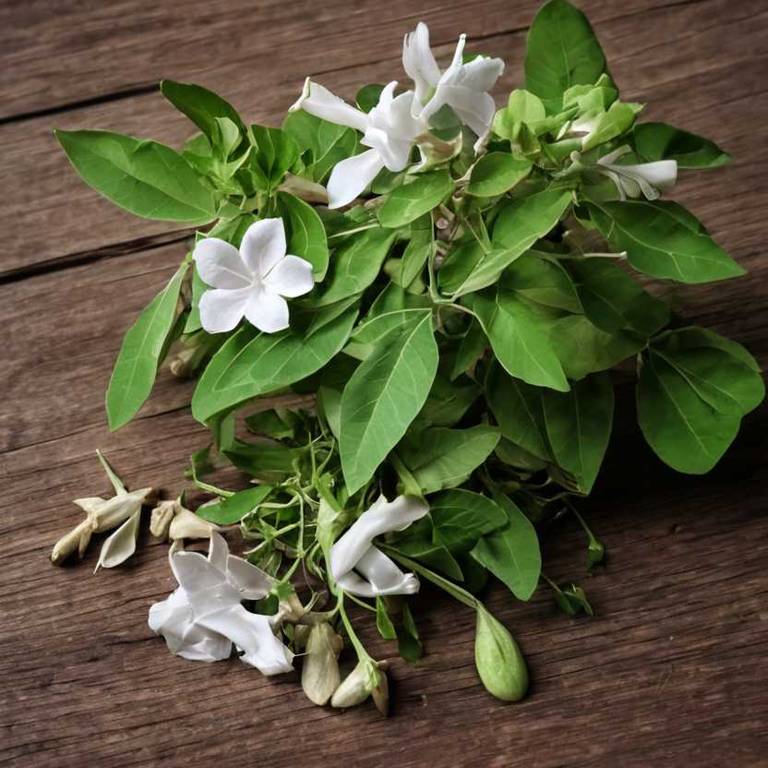By Leen Randell
Updated: Jul 06, 2024
What to know about Bauhinia variegata (orchid tree) before using it medicinally

Bauhinia variegata, commonly known as orchid tree, is a herb that has been prized for its numerous health benefits, including its ability to improve heart health, reduce inflammation, and lower blood pressure.
In terms of its horticultural aspects, the orchid tree is a flowering evergreen tree that thrives in tropical and subtropical climates, making it a popular ornamental plant in many gardens and landscapes. From a botanical standpoint, the orchid tree is a member of the legume family and is characterized by its striking, orchid-like flowers and its ability to fix nitrogen in the soil.
Historically, the orchid tree has been referred to in traditional Chinese medicine for centuries, where it is valued for its ability to nourish the blood and calm the spirit.
This article explains the medicinal, horticultural, botanical, and historical aspects of Bauhinia variegata.
What are the medicinal properties of Bauhinia variegata?
Bauhinia variegata helps with various ailments, including fever, rheumatism, and skin diseases. Its medicinal properties are attributed to its anti-inflammatory and antibacterial activities. The plant has been used in traditional medicine for centuries in various parts of the world.
The active constituents responsible for the medicinal properties of Bauhinia variegata include flavonoids, alkaloids, and saponins. These compounds have been isolated and studied for their potential therapeutic effects, including antioxidant and antimicrobial activities. Research has shown that the plant's extract has inhibitory effects on certain enzymes involved in inflammation.
The parts of the plant most commonly used for medicinal purposes are the leaves, bark, and flowers. The leaves are rich in flavonoids and alkaloids, while the bark contains saponins and other glycosides. The flowers are also used, particularly for their anti-inflammatory properties.
Improper use of Bauhinia variegata can lead to gastrointestinal irritation, allergic reactions, and even liver damage. The plant's saponins can also cause hemolysis in patients with glucose-6-phosphate dehydrogenase deficiency.
Precautions when using Bauhinia variegata medicinally include consulting a healthcare professional before use, especially for pregnant or breastfeeding women. Dosing and duration of treatment should be carefully monitored to avoid side effects. The plant's interactions with other medications, particularly those affecting the liver or kidney, should also be considered.
What are the horticulural aspects of Bauhinia variegata?
Bauhinia variegata grow best in well-drained acidic soils with a pH range of 5.5-6.5. It thrives in full sun to partial shade and tolerates temperatures between 15-30°C (59-86°F). Optimal growth occurs with 100-200 mm (4-8 in) of rainfall annually.
For optimal growth, plant Bauhinia variegata in an area with full sun to partial shade. Water regularly, but avoid overwatering, which can lead to root rot. Fertilize with a balanced, slow-release fertilizer in spring and summer, following package instructions for application rates.
Harvest Bauhinia variegata flowers in spring and summer, when blooms are fully opened. Cut stems at a 45-degree angle, about 1-2 cm (0.4-0.8 in) above a bud eye. Remove lower leaves to prevent waterlogged stems and promote better air circulation around the cut area.
Common pests affecting Bauhinia variegata include scale, mealybugs, and aphids. Diseases such as root rot, leaf spot, and powdery mildew can also occur. Regularly inspect plants for signs of infestation or disease, taking action promptly to prevent further damage.
What are the botanical aspects of Bauhinia variegata?
Bauhinia variegata is a deciduous tree with a broad, flat crown and a straight, unbranched trunk. It grows up to 15 meters tall, with a trunk diameter of 60 cm. The bark is grayish-brown with a smooth texture.
Bauhinia variegata belongs to the family Fabaceae, subfamily Caesalpinioideae. It is classified as follows: Kingdom: Plantae, Phylum: Tracheophyta, Class: Magnoliopsida, Order: Fabales, Family: Fabaceae, Subfamily: Caesalpinioideae, Tribe: Cercideae. This classification is based on its morphological and molecular characteristics.
The orchid tree has several variants, including 'variegata' and 'purpurea'. These variants differ in their leaf coloration and flower color. The 'variegata' variant has white or cream-colored flowers, while the 'purpurea' variant has deep purple flowers. The 'variegata' variant is more commonly cultivated.
Bauhinia variegata is native to tropical and subtropical regions of Asia. It is widely distributed in India, China, Southeast Asia, and the Pacific Islands. It has been introduced to Africa and the Americas as an ornamental plant.
The life cycle of the orchid tree is as follows: The tree flowers in the spring and summer months, with a peak flowering period in May and June. The flowers are followed by pods that contain 10-20 seeds. The seeds germinate in the autumn, and the seedlings grow into saplings that take 5-7 years to mature.
What are the historical aspects of Bauhinia variegata?
Bauhinia variegata is a plant that has been used for various purposes throughout history. In ancient China, its flowers were used to make a tea that was believed to have medicinal properties. In traditional Indian medicine, the plant's bark was used to treat fever.
In Hindu mythology, the plant is associated with the goddess Lakshmi, who is said to have emerged from the plant. In some cultures, the plant is also linked to the god Vishnu. In Buddhist tradition, the plant is said to represent the fleeting nature of life.
In many Eastern cultures, the Bauhinia variegata is considered a symbol of good fortune and prosperity. The plant's flowers are also seen as a symbol of fertility and abundance. In some cultures, the plant is used in rituals and ceremonies to promote spiritual growth.
Historical texts such as the Materia Medica by Li Shizhen and the Ayurvedic text Charaka Samhita mention the use of Bauhinia variegata in traditional medicine. The plant's uses and properties are also described in the ancient Chinese medical text Huangdi Neijing.
Archaeological evidence shows that the Bauhinia variegata was used in ancient rituals and ceremonies. Fossil evidence suggests that the plant has been in existence for millions of years. Ancient artifacts such as sculptures and carvings depict the plant in various forms and settings.